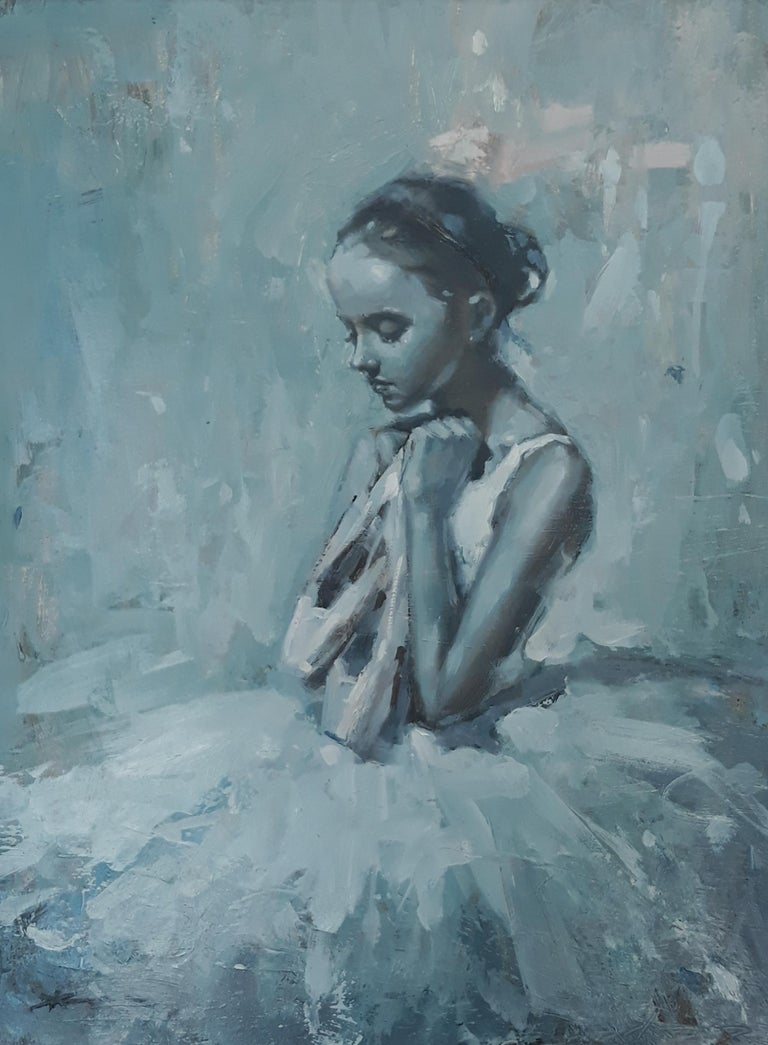Discovering Iconic Artists and Their Influences on Figurative Oil Painting
Discovering Iconic Artists and Their Influences on Figurative Oil Painting
Blog Article
The Role of Emotion and Expression in Figurative Oil Painting: An Extensive Evaluation of Topic and Composition
The interaction of feeling and expression in metaphorical oil painting offers as a critical lens with which one can take a look at the detailed connection between subject matter and structure. Artists harness numerous techniques, from shade selection to brushstroke characteristics, to grow emotional resonance within their works.
Recognizing Emotion in Art
Feeling in art works as an effective channel for expression, allowing artists to share complex sensations via their job. In metaphorical oil paint, this psychological deepness is typically represented through the representation of the human number, capturing the subtleties of human experience. The selection of subject, color combination, and brushwork all add to the psychological vibration of a piece.
Artists often bring into play individual experiences, social concerns, or global styles to evoke feelings in the visitor. For example, a portrait may mirror vulnerability, while a vibrant number in activity can symbolize liberty or turmoil. These psychological strings attach the viewer to the artwork, cultivating a discussion that goes beyond the aesthetic tool.
Additionally, the interplay between light and shadow can amplify emotional strength, leading the viewer's gaze and drawing attention to particular elements within the composition. Making use of appearance in oil painting additionally includes layers of complexity, inviting a tactile feedback that boosts the psychological experience. On the whole, understanding emotion in art is important for valuing the subtleties that identify metaphorical oil painting, as it changes simple representation into an extensive exploration of the human problem.
Crucial Element of Composition
In the realm of metaphorical oil paint, the structure serves as the underlying framework that arranges aesthetic components and enhances the psychological narrative. Vital elements of structure include equilibrium, contrast, centerpiece, and rhythm, each adding to the total effect of the artwork.
Equilibrium refers to the distribution of aesthetic weight within the painting, which can be achieved via unbalanced or in proportion arrangements. A healthy make-up gives stability, allowing the customer to engage with the item harmoniously - figurative oil painting. Comparison, on the other hand, includes comparing various elements, such as dark and light or warm and awesome shades, to assist the audience's eye and stimulate emotional actions
The focal factor is crucial, as it guides focus to the most significant part of the paint, frequently highlighting the emotional core of the narrative. By skillfully incorporating these vital elements, musicians can craft emotionally resonant and engaging metaphorical oil paintings that mesmerize and engage their target market.
Topic Matter and Its Effect
Subject plays a pivotal duty in metaphorical oil paint, as it not just works as the structure for the narrative however additionally shapes the audience's interpretation and emotional engagement with the art work. The selection of topic-- be it a solitary number, a group dynamic, or a thematic depiction-- directly influences the emotional atmosphere shared to the audience.

For example, pictures typically evoke individual connections, revealing the details of human expression and character, while scenes depicting public activities can develop a sense of belonging or nostalgia. The social and historic context of the subject issue enriches the visitor's understanding, triggering much deeper reflections on social norms, values, and the human problem.
Different topics also produce differing levels of interaction; a significant problem shown through numbers in tension may elicit feelings of stress and anxiety or compassion, while serene landscapes can conjure up harmony and contemplation. Eventually, the influence of subject matter in figurative oil paint is extensive, as it functions as a channel for psychological resonance, assisting the viewer's reaction and analysis, and cultivating a link in between the artwork and the onlooker. This interaction is essential for the successful communication of the musician's intent.
Strategies for Stimulating Sensations
The effectiveness of figurative oil painting in conveying emotions is considerably influenced by the methods utilized by the musician. One of the most crucial techniques is the usage of shade concept, click this site where the critical option of hues can evoke specific psychological responses. Cozy shades, such as oranges and reds, often elicit sensations of interest or aggressiveness, while cooler tones like blues and environment-friendlies often tend to stimulate calmness or unhappiness.
Another important technique is the manipulation of light and shadow, called chiaroscuro. This approach boosts the three-dimensionality of numbers, producing dramatic contrasts that can magnify emotional deepness. The positioning of light can direct audiences' emotions, highlighting details aspects of the composition.
Brushwork likewise plays a crucial role; loose, meaningful strokes can convey power and spontaneity, whereas smoother strategies could recommend serenity or precision. In addition, the setup of subjects within the make-up can affect emotional influence. Close proximity can recommend intimacy, while range may indicate seclusion.
Ultimately, the mix of these methods enables artists to craft stories that resonate with the visitor, transforming a mere aesthetic experience into an expressive psychological trip. - figurative oil painting

Study of Notable Works
Examining noteworthy jobs of metaphorical oil painting exposes just how numerous techniques are utilized to stimulate effective feelings. One exemplary situation is Edvard Munch's "The Scream," where the altered number and swirling history convey existential dread. Munch's usage of shade-- deep blues and vibrant oranges-- escalates the emotional impact, showcasing exactly how combination selections can form viewer experience.
One more significant job is Pablo Picasso's "Les Demoiselles d'Avignon." Below, strong brushstrokes and fragmented forms mirror a tumultuous psychological landscape, challenging conventional depictions of the female number. Picasso's innovative make-up not just records the visitor's focus however likewise invites contemplation on themes of identification and sexuality.
In Addition, Frida Kahlo's "Both Fridas" uses a touching exploration of duality and self-identity. The contrasting numbers, connected by a shared heart, exemplify Kahlo's emotional deepness and individual narrative. figurative oil painting. Her meticulous focus to information and symbolic aspects serve to involve customers on a visceral level
These instance studies emphasize the extensive connection in between feeling and composition in metaphorical oil paint, revealing just how musicians harness technique to connect complicated feelings and stories that resonate across time and society.

Final Thought
In conclusion, the interaction of web link emotion and expression in metaphorical oil paint substantially enhances the customer's experience and interpretation of the artwork. Via a cautious option of topic and compositional strategies, artists Resources share profound stories that reverberate on both universal and individual levels. The application of shade brushwork, chiaroscuro, and theory further amplifies psychological deepness, changing each canvas right into a powerful representation of the complexities of the human experience.
In figurative oil painting, this psychological deepness is often depicted with the representation of the human figure, recording the nuances of human experience.Additionally, the interplay in between light and darkness can amplify emotional intensity, guiding the visitor's stare and attracting interest to certain aspects within the structure. The use of appearance in oil paint even more includes layers of intricacy, inviting a tactile response that improves the emotional experience.The focal factor is critical, as it guides focus to the most considerable part of the paint, usually highlighting the emotional core of the story. Inevitably, the effect of subject issue in figurative oil paint is profound, as it offers as a conduit for psychological vibration, guiding the customer's action and interpretation, and cultivating a connection between the art work and the observer.
Report this page